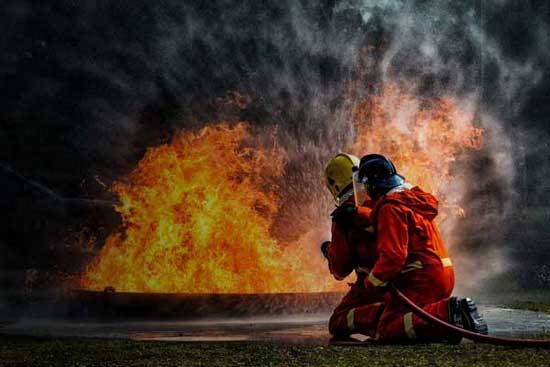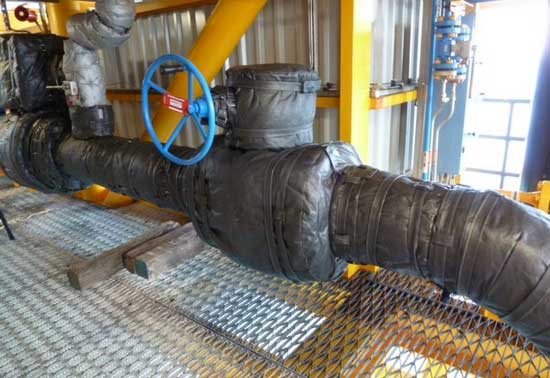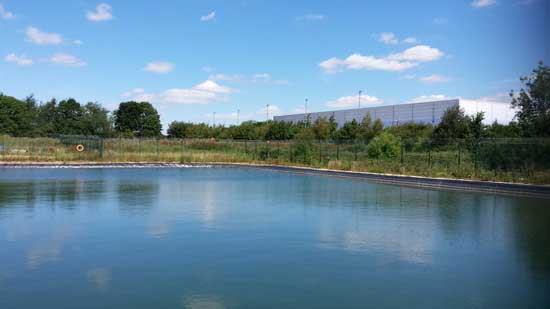Active & Passive fire protection
Active fire protection systems such as water sprinklers and spray systems are widely used in the process industry to protect storage vessels, process plants, loading facilities and warehouses. The function of the fire protection system may be to extinguish the fire, control the fire or provide exposure protection to prevent domino effects.
For some applications, foam pourers or fixed water monitors may be a more appropriate method than sprinklers or sprayers. Other, more specialized systems that use inert gases and halogen-based gases are used for flooding confined spaces.
Passive fire protection can be an effective alternative to active systems to prevent vessel failure. It usually consists of a coating of fire-resistant insulating material applied to a vessel or steel surface.
Passive fire protection is often used when insufficient water or other active protection resource(s) are available, such as in remote locations, or when there are problems with the runoff of firefighting water.
Fire walls are another form of passive fire protection used to prevent the spread of fire and exposure of adjacent equipment to heat radiation. Important criteria for determining which system is most appropriate for fire protection is the likely duration of exposure to fire, since passive fire protection is effective only for exposure of short duration (1-2 hours).
General principles
The operator must be able to demonstrate that he has an effective and practical plan for the containment and suppression of fires in his process plants. In determining whether active and passive fire protection measures are necessary, the following site-specific factors should be considered...
- fire fighting capability of on site emergency response team
- toxicity of substances and the smoke produced
- response time of nearest fire brigade
- resource(s) available to fire brigade
- fire hazard posed by substance
- inventory size
- frequency of hazardous operations
- available access to fight fire
- distance to other hazardous installations
System design
Active fire protection systems must be reliable and the design of the system must demonstrate this. The design of fire fighting systems must meet specific standards as defined, e.g., by the National Fire Protection Association (NFPA).
Foam and water source must be located at a safe distance from the hazardous installation. Critical valves and instrument cabling located on the protected system must be resistant to the effects of fire and heat.
The system should be fed by a safe water supply that includes, where applicable, components such as spare diesel pumps. The design should ensure that the active fire protection system does not run out of water during a fire due to other water supply system requirements.

Choice of fire fighting resource(s)
The choice of resource(s) depends on the task required. This may be to extinguish the fire, control the fire or provide protection from exposure. Types of extinguishing agents are...
- Water
- Foams
- Inert gases
- Chemical powders
- Halons
Water is not recommended as an extinguishing agent for low flash point liquids, but is widely used throughout industry for fire control and exposure protection.
Foam is a more effective extinguishing agent for low flash point substances and is widely used in liquid fires. Several types of foam are available, but the most commonly used is protein foam. Alcohol-resistant foam is used for application to polar solvents where foam stability is affected. Other more specialized foams have also been developed with improved extinguishing properties, such as fluoro-protein foams and foams that form an aqueous film. Foams can be supplied with low, medium or high expansion, depending on the load required.
Other agents such as inert gases, chemical powders and halogen gases (halons) can be provided by active fire protection systems, but these are usually installed where process equipment is located in an enclosure, such as a gas turbine casing. These systems are often used to protect control rooms and control panels. The use of halons has become increasingly unpopular in recent years because of the potential effect on the ozone layer and other undesirable environmental effects.
Choice of passive fire protection
To protect vessels from exposure to fire, there are a number of types of passive fire protection that can be used...
- intumescent coating
- sublimation coating
- mortar based coating
- mineral fibre matting
- earth mounds
Coatings-based protective systems are normally sprayed onto the surface after the necessary components are mixed. A reinforcing fiberglass mat or steel wire mesh is applied to prevent cracking and peeling of the coating under fire conditions and to provide additional strength to withstand the impact of high-pressure water jets.
The fire-resistant coating is further protected by a weather-resistant top coat. The fire-resistant performance of the coatings depends on the thickness of the coating.
Fiber mat systems consist of fire-resistant mineral fiber mats coated with a protective galvanized steel sheet. The protective performance of the system is provided by the system's poor thermal conductivity.

Earth mounds are often used in the LPG industry, where barrels are partially or fully buried in an earth mound. The presence of the earth mound effectively prevents fire from starting around the vessel.
Fire walls are sometimes used in process and storage areas to prevent the spread of fire and protect adjacent equipment from thermal radiation. They may be an integral part of a process building or warehouse structure or may consist of a freestanding wall built specifically for this purpose. Fire walls are usually made of brick, concrete or masonry and the number and size of openings should be kept to a minimum.
Maintenance requirements
Active fire protection systems must be properly maintained to ensure reliability. In particular, systems that use water and water-based foams are prone to rust buildup that can clog sprinkler heads and nozzles. Procedures should be in place for regular maintenance and testing of the systems. Maintenance contracts are often negotiated with the fire protection system supplier. The site manager should keep records of these activities.
The performance of passive fire protection systems can deteriorate over time due to weathering and corrosion. Factory operating and maintenance activities can damage or remove the fire protection system. In addition, the protected surface itself may corrode under the fire protection system. Procedures should be in place to ensure that both the passive fire protection system and the protected surface are regularly inspected and repaired as necessary.
Containment of firewater
Active foam and water-based fire protection systems can generate significant amounts of wastewater with significant potential environmental damage. If active fire protection systems are installed, the overall design of the facility must account for the collection of fire extinguishing wastes. Company sites should have plans for wastewater disposal as part of their emergency plans.

Supporting measures
Where active or passive fire protection is installed, these systems should be supported by fire hydrants in appropriate locations. Suitable portable firefighting equipment should also be provided at the facility.
Mortar-based fire protection is often used to protect load-bearing steel structures from collapse when exposed to fire. It is routinely applied to support vessels and supporting structures for process equipment where many combustibles are handled.
Industry applications
LPG industry
The use of water closure systems to protect bulk LPG storage vessels and loading bays is standard industry practice for all but the smallest installations. Passive fire protection is used as an alternative and, in particular, grounding of LPG tanks is an established practice. Large LPG tanks that are covered are usually equipped with fixed water monitors or a sprinkler system.
Flammable liquids / solvent bulk storage
Although active fire protection is not a standard requirement for vessels containing flammable and highly flammable liquids, location factors such as insufficient distance from other facilities or proximity to occupied buildings may require the use of active or passive fire protection to prevent escalation of a fire. Where protection of remote storage tanks is required, passive fire protection is usually used. However, it is not common to protect storage tanks in locations that pose no danger to people directly or by domino effect.
Process operating units
Both the material processed, the size of the combustible inventory and the local fire suppression capability affect the need for active fire protection on a process structure. In particular, when process equipment handling significant amounts of combustible material is located within a building and fire suppression capabilities are poor, fixed fire protection systems should be used.
Warehousing
The considerations are largely similar to those for process control units. For storage of highly hazardous materials such as organic peroxides in warehouses, fixed sprinkler systems using foam or water should be provided. It should be noted, however, that the effectiveness of sprinkler systems in warehouses may be limited if inventory densities are high. Special care should be taken when designing such systems.
References.. www.hse.gov.uk